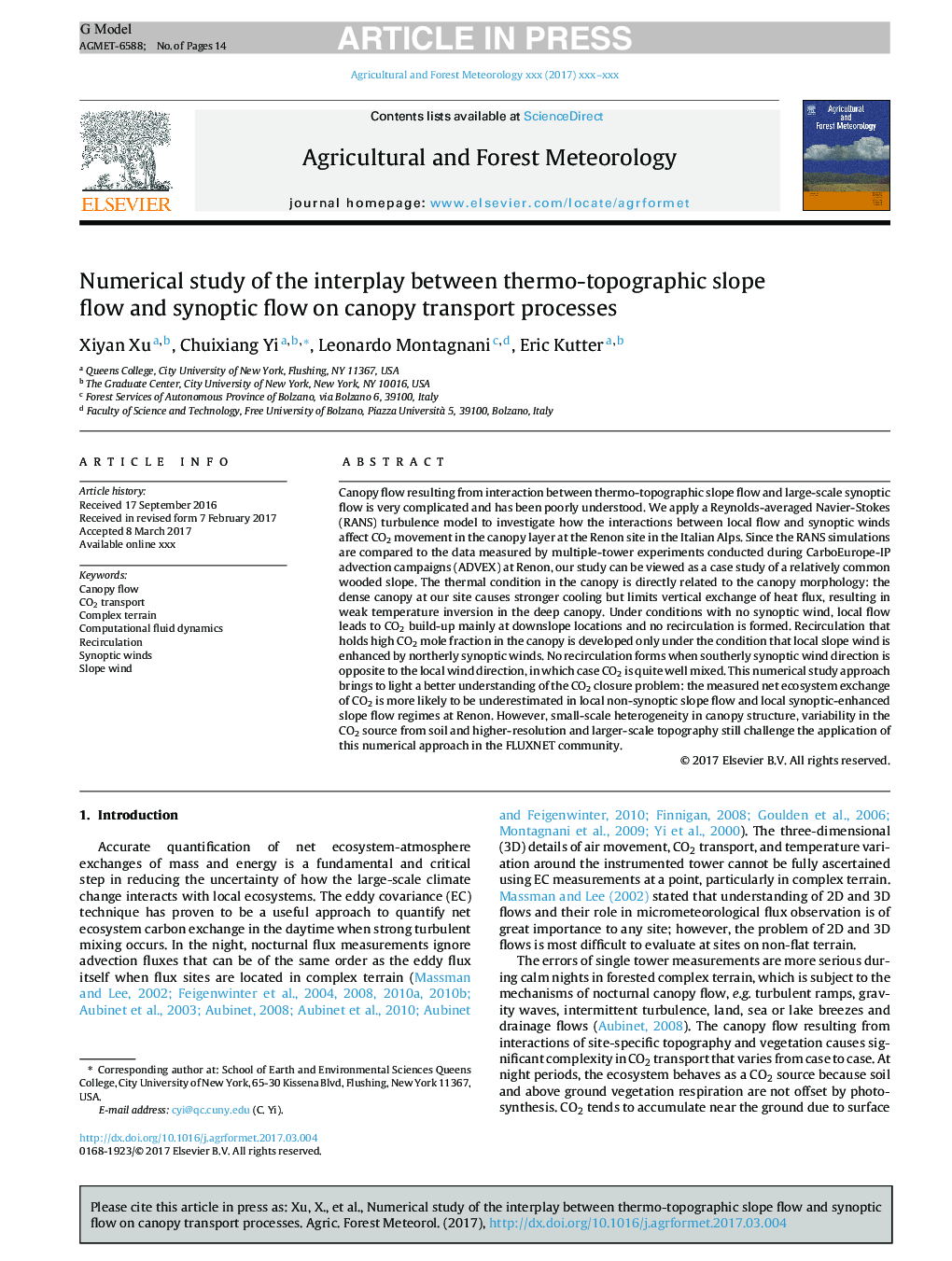| کد مقاله | کد نشریه | سال انتشار | مقاله انگلیسی | نسخه تمام متن |
|---|---|---|---|---|
| 6536723 | 1420848 | 2018 | 14 صفحه PDF | دانلود رایگان |
عنوان انگلیسی مقاله ISI
Numerical study of the interplay between thermo-topographic slope flow and synoptic flow on canopy transport processes
ترجمه فارسی عنوان
مطالعه عددی اثر متقابل جریان شیب گرمایی و توپوگرافی و جریان سینوپتیک بر فرآیندهای انتقال کانوپی
دانلود مقاله + سفارش ترجمه
دانلود مقاله ISI انگلیسی
رایگان برای ایرانیان
کلمات کلیدی
موضوعات مرتبط
مهندسی و علوم پایه
علوم زمین و سیارات
علم هواشناسی
چکیده انگلیسی
Canopy flow resulting from interaction between thermo-topographic slope flow and large-scale synoptic flow is very complicated and has been poorly understood. We apply a Reynolds-averaged Navier-Stokes (RANS) turbulence model to investigate how the interactions between local flow and synoptic winds affect CO2 movement in the canopy layer at the Renon site in the Italian Alps. Since the RANS simulations are compared to the data measured by multiple-tower experiments conducted during CarboEurope-IP advection campaigns (ADVEX) at Renon, our study can be viewed as a case study of a relatively common wooded slope. The thermal condition in the canopy is directly related to the canopy morphology: the dense canopy at our site causes stronger cooling but limits vertical exchange of heat flux, resulting in weak temperature inversion in the deep canopy. Under conditions with no synoptic wind, local flow leads to CO2 build-up mainly at downslope locations and no recirculation is formed. Recirculation that holds high CO2 mole fraction in the canopy is developed only under the condition that local slope wind is enhanced by northerly synoptic winds. No recirculation forms when southerly synoptic wind direction is opposite to the local wind direction, in which case CO2 is quite well mixed. This numerical study approach brings to light a better understanding of the CO2 closure problem: the measured net ecosystem exchange of CO2 is more likely to be underestimated in local non-synoptic slope flow and local synoptic-enhanced slope flow regimes at Renon. However, small-scale heterogeneity in canopy structure, variability in the CO2 source from soil and higher-resolution and larger-scale topography still challenge the application of this numerical approach in the FLUXNET community.
ناشر
Database: Elsevier - ScienceDirect (ساینس دایرکت)
Journal: Agricultural and Forest Meteorology - Volume 255, 28 May 2018, Pages 3-16
Journal: Agricultural and Forest Meteorology - Volume 255, 28 May 2018, Pages 3-16
نویسندگان
Xiyan Xu, Chuixiang Yi, Leonardo Montagnani, Eric Kutter,
